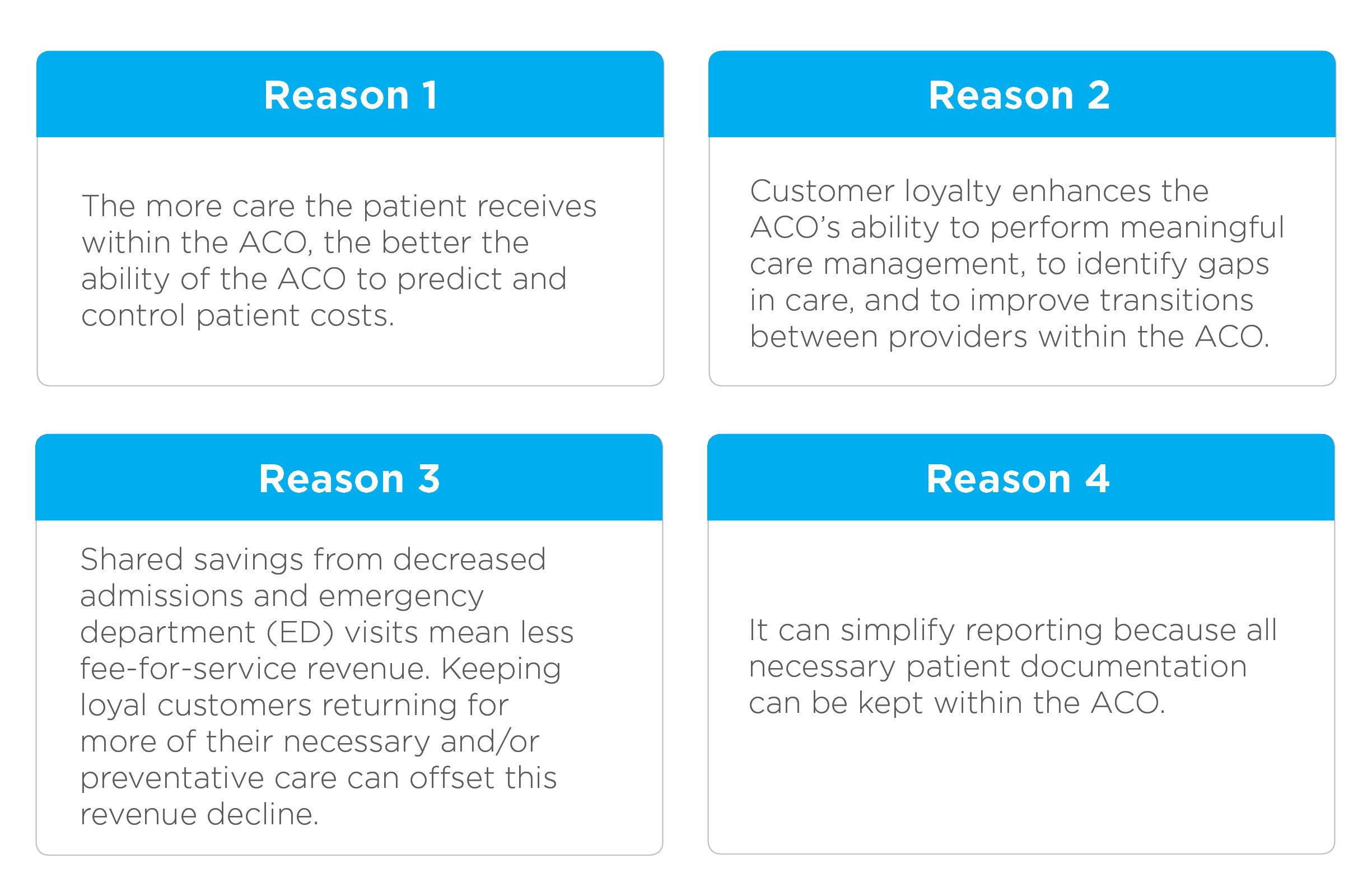Article
MACRA Patient Engagement Cheat Sheet #3
Author(s):
With MACRA, providers gain access to financial incentives for value-based care, and patient engagement becomes crucial.
With the Medicare Access and CHIP Reauthorization Act, CMS is giving provider organizations a huge push toward value-based care by establishing large financial incentives for the adoption of new risk-sharing programs. Known as Advanced Alternative Payment Models (APMs), these risk-sharing models become more financially attractive each year, beginning in 2017. Providers who are unable to adopt one of these models will face ever-increasing negative payment adjustments. While there are specific APMs for certain specialties, the most generally available APM path is for providers to form or join an accountable care organization (ACO) under the Medicare Shared Savings Program.
While many providers may not wish to jump immediately into an ACO transformation, it may become a financial imperative before they know it. Therefore, prudent provider organizations will be thinking strategically about the types of changes that would begin the transition to an ACO while generating other benefits for their patients and themselves.
Becoming more consumer/patient centric is an excellent initial step on the path to a successful ACO. Per the Advisory Board Company, customer loyalty and population health management are "no-risk" investments for provider organizations. No matter what uncertainty the current political environment may create, the confluence of public and private market forces will reward those organizations that can improve outcomes and customer satisfaction in a cost-effective manner.
Customer loyalty
Customer loyalty is especially important for ACOs for multiple reasons:

Engaging patients with technology is one cost-effective way to enhance customer loyalty. First, giving tools to patients (and family members, if they wish) that foster participation in their own health shows respect and inclusion that are, unfortunately, uncommon in today's healthcare environment. Treating patients as active subjects in their healthcare journey, rather than passive objects on which healthcare is performed, can revolutionize the provider-partner relationship.
Second, it allows ACOs to extend the healthcare conversation far beyond the confines of the occasional visit. Rather than trying to build a substantive relationship based on just a few visits a year, providers can interact with patients much more frequently. These additional interactions don’t have to be labor-intensive on the provider side to be meaningful to the patients. For example:
- Automatically delivering online patient satisfaction surveys after visits
- Providing useful and relevant content to patients by automatically personalizing it based on their health status
- Giving patients (and family members, when appropriate) 24/7 access to tools and useful information
- Automatic patient reminders
These low-burden, highly-automated forms of patient engagement are a great place to start when building customer loyalty. They offer a way to make substantial progress with no workflow changes and for a limited investment of scarce resources. As the balance continues to shift in the pay-for-performance direction, ACOs can supplement these efforts with more interactive forms of patient engagement such as communicating with patients via secure e-mail, performing remote monitoring, and enabling virtual visits.
Population health management
Fundamentally, the entire purpose of an ACO is to deliver better health outcomes to a given patient population at a lower cost. There are numerous ways patient engagement can help organizations achieve these goals.
ACOs can deploy information-gathering tools such as health risk assessments, health journals, and surveys to better understand each individual patient. This data can then be used to determine risk levels and tailor interventions. Identifying those patients who have the potential to be the costliest and intervening early is one of the best ways to control overall healthcare expenses.
Engaging patients who have chronic conditions (the most financially taxing subset of the patient population) with tools to help them be successful in their self-care is one of the most cost-effective ways to control healthcare budgets. This doesn't require any changes to practice workflows. Giving these patients access to self-management action plans with automated reminders, clear instructions, and helpful content can greatly improve the likelihood that they will be more successful in managing their condition between visits. For many conditions, consistent patient adherence to self-care tasks like taking medications and eating properly can make a bigger difference than anything a provider can do in a healthcare facility.
Conclusion
Electronic patient engagement can simultaneously help ACOs improve customer loyalty and improve the overall health of their patients at a lower cost. Used appropriately, a single patient engagement initiative can make a substantial difference in both areas. For example, using a portal and outbound messaging, an ACO can keep those it serves abreast of wellness and illness-prevention opportunities. Whether it be flu shots, nutritional counseling, community fitness events like fun runs or online stress reduction seminars, providers can help patients find a wealth of information to help keep themselves healthy. Taking on this supportive, coaching role is a low-effort way to continuously show your patients that you care about their overall health, not just their treatable illnesses. Thus, an ACO can engender customer loyalty while improving patient outcomes for a minimal investment.
Even if an organization doesn't plan to go the ACO route in 2017, now is the time for provider organizations to consider how building their patient engagement capability can immediately deliver benefits and prepare them for a world in which value-based care will become incrementally more important with every passing year.





